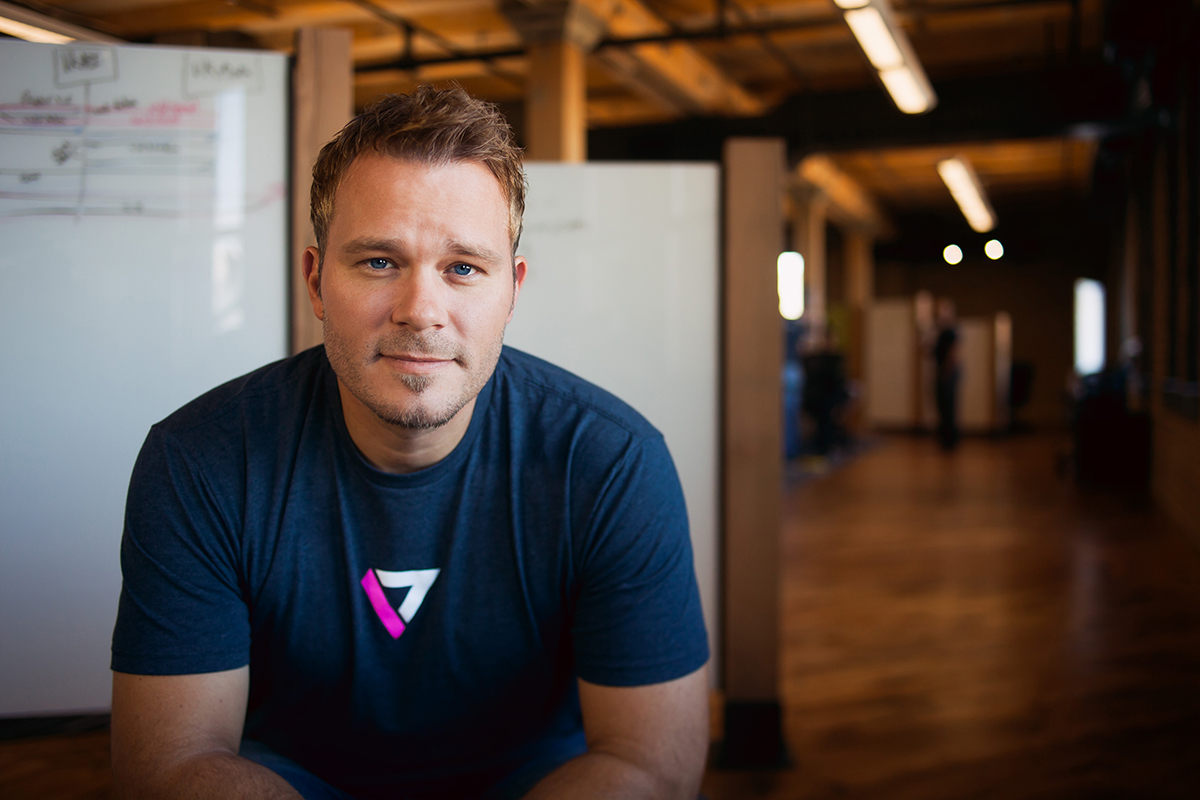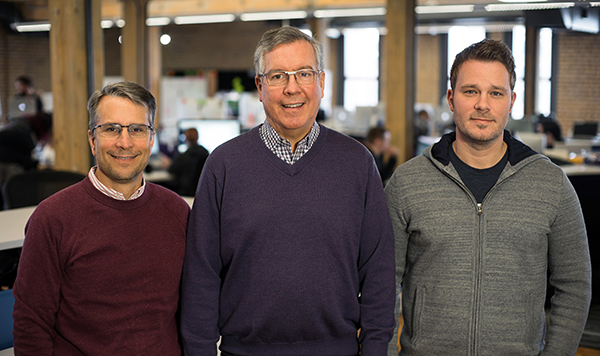Charlie Miller got his first computer for Christmas when he was 7. It was a Packard Bell, and it came with a game called King’s Quest. He sure loved the computer and the game, but he began to imagine a different world of gaming.
“That’s when I first had the feeling that things could be designed better,” he says with a grin.
Miller grew up to be a designer and brought his skills to instructional design in Minnesota, where he became part of the digital revolution in education. He joined the Department of Curriculum and Instruction first as a doctoral student, completing his Ph.D. in 2007, then as a faculty member.
Flipgrid transforms the classroom
In the classroom Miller first conceived of Flipgrid. He and LT graduate student Brad Hosack created a platform that allowed Miller to pose a question to his students and each of them to record a short video response on their webcam, phone, or tablet. The student videos appeared in a grid on their screens, giving all the voices equal volume. It was a way to make every seat in the classroom visible and audible—no hiding in the back row or keeping quiet while a few students hogged class time with their questions and ideas. Flipgrid worked in face-to-face as well as online classes, extending the discussion from week to week.
From there, Flipgrid grew so fast that Miller and the staff could barely keep up. It was adopted in other university classrooms, then K–12 classrooms, then by groups, conferences, organizations, and businesses—from a college in Dubai to the World Health Organization. User #21 was a second-grade teacher in Athens, Georgia, whose Black History Month assignment asked his students to record their suggestions for the next individual in black history to appear on a postage stamp.
Miller built a small Flipgrid team by partnering with a St. Paul K–12 publishing company, EMC Publishing, to help distribute the product to districts across the country. But, as development grew, it was tough to attract talent for the venture when prospects could make twice as much in the private sector, three or four times as much in California.
Beyond classrooms
In January 2014 CEHD dean Jean Quam connected Miller with educational entrepreneur and philanthropist Phil Soran. She thought he might be a good business adviser. Soran was invited to take a look.
“The night before the meeting it had snowed several inches,” Miller says, “but at 8 a.m., there he was in a suit and big winter boots. During our meeting I Googled him and read that he had sold his last company for just shy of $1 billion. That got my attention—but I didn’t foresee the opportunity.”
Miller didn’t hear from Soran again until summer. This time, Soran invited him to lunch and brought entrepreneur Jim Leslie. Soran and Leslie were very impressed that companies and organizations were using Flipgrid without it ever being marketed to them. They proposed organizing a series of investor pitches to expand upon the product.
That fall, Miller and his team met with 10 of the largest venture capital firms in Silicon Valley, followed by a dozen meetings with Minnesota entrepreneurs. In 17 days, they raised more than $17 million.
The new company’s name, Vidku, came from Miller’s focus on short video and his experiences sharing video content of his children with family and friends.
Vidku was officially formed in February 2015. It acquired Flipgrid from CEHD for $6.75 million and a four-percent equity stake in the company, which the dean used to create a start-up incubator for the college.
Dream team
Jim Leslie thought he had retired after selling his own company in 2011 and staying with it under new ownership until 2013. Now he is Vidku’s CEO.
“I had certain criteria for ever going back to a day job that were so high I never expected to meet them,” says Leslie. “One was working with a team of truly exceptional talent and energy. And here I am.”
Here is the fifth floor of the McKesson Building in the North Loop of downtown Minneapolis. His dream team includes grad students who followed Miller to take company roles, from engineer to VP.
As chief design officer, Miller is again creating a space that is becoming a place. Work desks and equipment fill half the floor, and social space fills the other, surrounded by timber beams and big windows that say the sky is the limit.

Life for Miller as a start-up cofounder has meant a leave from his faculty position. But he’s still commuting and balancing work and home life.
“The main thing is I’m doing a lot more design,” he says, “like 80 hours a week instead of 10. It’s exhilarating!”
Room to grow
Vidku launched its first product in October, a personal app for sharing short videos simply and safely with unlimited groups of family and friends. “Share more, worry less,” is how Miller describes it. A version for larger organizations is being piloted with more than 100 teams nationwide.
When Miller left the U, Flipgrid had 1.1 million videos shared across 40 countries. Today it has 5.9 million videos shared across 96 countries on 6 continents, a 436 percent increase in a year.
In February, Miller and Hosack traveled to Georgia to celebrate the Flipgrid “Oscars” with that early adopter, second-grade teacher Andy Plemmons, and his students, who rolled out the red carpet in their Athens elementary school for viewers at Vidku and all over the world.
Learn more at flipgrid.com and vidku.com.
Story by Gayla Marty | Photos by Justin Evidon | Spring/summer 2016
 Charlie Miller
Charlie Miller 